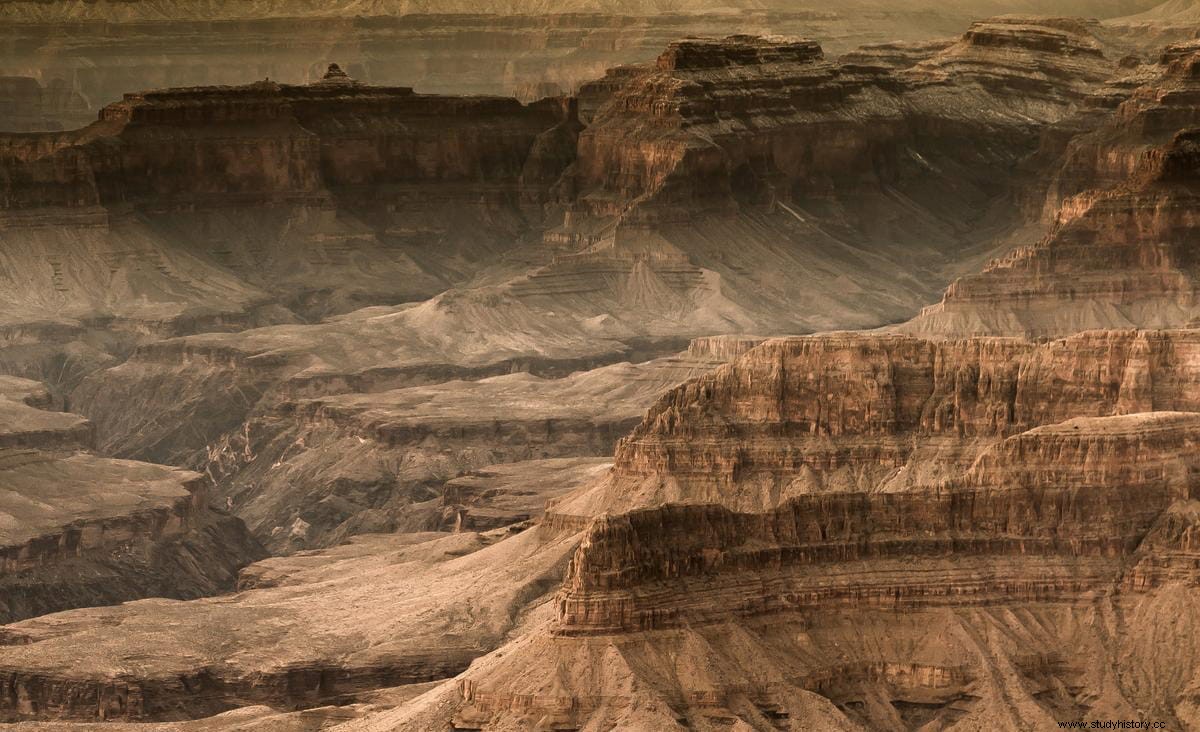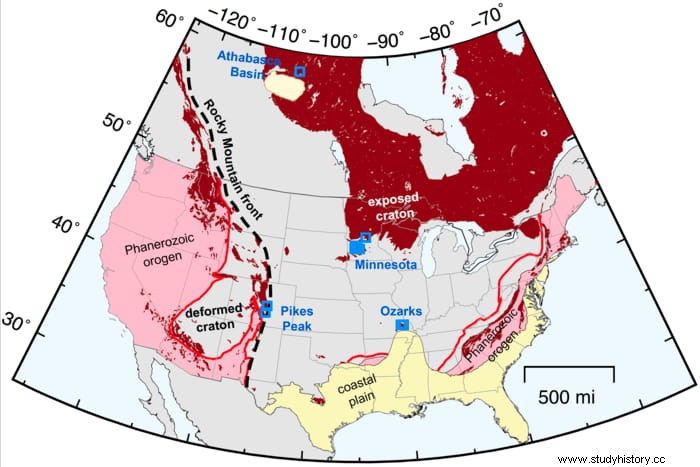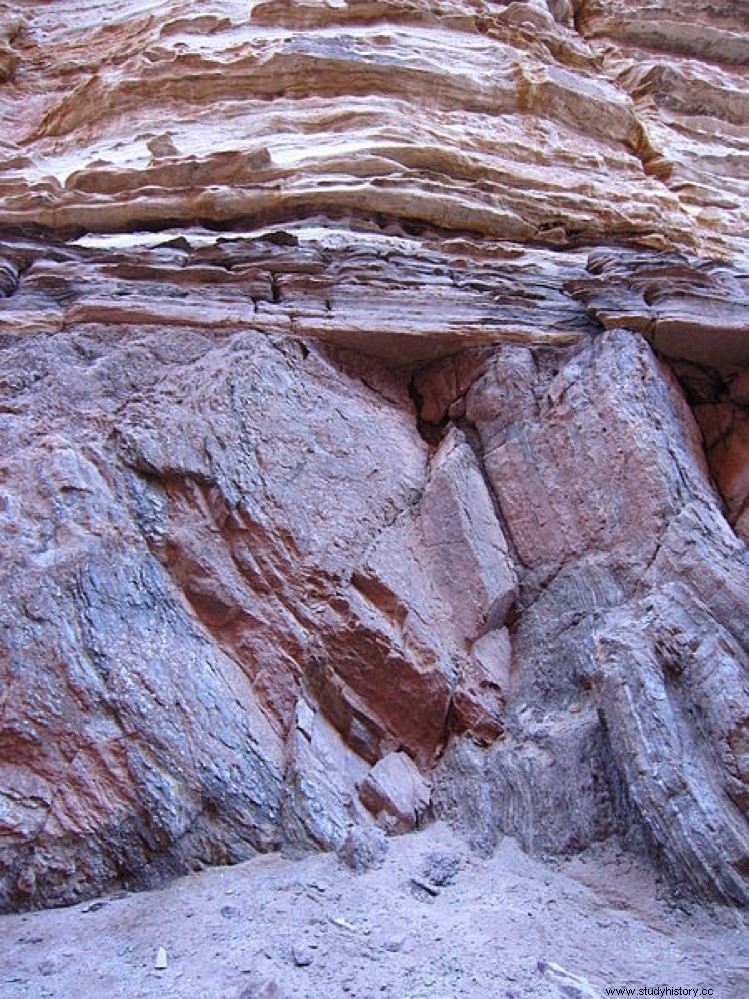According to a study published in Proceedings of the National Academy of Sciences , new research provides further evidence that rocks representing up to a billion years of geologic time were sculpted by ancient glaciers during the Snowball Earth period. (or global glaciation) of the planet.
The research presents the latest findings in the debate about the cause of Earth's Great Unconformity, a temporary gap in the geological record associated with the erosion of rocks up to 5 kilometers thick in areas around the planet.
The fact that sedimentary rocks from this period are missing in so many places has been one of the most puzzling features of the rock record said C. Brenhin Keller, an associate professor of Earth sciences and the study's principal investigator. With these results, the pattern starts to make a lot more sense .

The massive amount of missing rock that has come to be known as the Great Unconformity was first named in the Grand Canyon in the late 19th century. This striking geological feature is visible where rock layers from distant time periods intersect, and is often identified where fossil-bearing rocks sit directly on non-fossil-bearing ones.
This was a fascinating time in Earth's history , says Kalin McDannell, a Dartmouth postdoctoral researcher and lead author of the paper. The Great Unconformity lays the foundation for the Cambrian explosion of life, which has always been puzzling for being so abrupt in the fossil record; geological and evolutionary processes are usually gradual .
For more than a century, researchers have tried to explain the cause of lost geologic time. In the last five years, two opposing theories have emerged:One explains that the rock was sculpted by ancient glaciers during the Snowball Earth period, between 700 and 635 million years ago. The other focuses on a series of plate tectonic events over a much longer period during the assembly and breakup of the supercontinent Rodinia from about a billion to 550 million years ago.
Research led by Keller in 2019 first proposed that widespread erosion by continental ice sheets during the cryogenic glacial interval caused rock loss. This was based on geochemical indicators that suggested that large amounts of massive erosion coincided with the Snowball Earth period. The new research verifies and advances the findings of the previous study Keller said. Here we provide independent evidence of rock cooling and kilometers of exhumation in the cryogenic period over a large area of North America .

The study is based on a detailed interpretation of thermochronology to carry out the evaluation. Thermochronology allows researchers to estimate the temperature experienced by mineral crystals over time, as well as their position in the continental crust given a given thermal structure. These histories can provide evidence of when the missing rock was removed and when rocks currently exposed on the surface could be exhumed.
The researchers used multiple measurements of previously published thermochronometric data taken at four locations in North America. The zones, known as cratons, are chemically and physically stable parts of the continent, and where plate tectonic activity would not have been common during that time.
By running simulations looking at the time-temperature trajectory that the rocks experienced, the research recorded a widespread signal of rapid and large-scale cooling consistent with about 2-3 kilometers of erosion during the Snowball Earth glaciations across the globe. interior of North America.
While other studies have used thermochronology to question glacial origin, a global phenomenon such as the Great Unconformity requires a global assessment McDannell said. Glaciation is the simplest explanation for erosion over a vast area during the Snowball Earth period, as ice sheets are thought to have covered most of North America at that time and may be efficient rock excavators .

According to the research team, the contrary theory that tectonic activity sculpted the missing rock was put forward in 2020, when another research group questioned whether ancient glaciers were erosive enough to cause massive rock loss. Although that research also used thermochronology, it applied an alternative technique at a single tectonically active location and suggested that erosion occurred before Snowball Earth. The underlying concept is quite simple:Something removed a bunch of rock, resulting in a bunch of wasted time Keller said. Our research shows that only glacial erosion could be responsible on this scale .
According to the researchers, the new findings also help explain the links between the erosion of rocks and the appearance of complex organisms about 530 million years ago, during the Cambrian explosion. Erosion during the Snowball Earth period is thought to have deposited nutrient-rich sediments in the ocean that could have provided a fertile environment for the building blocks of complex life.
The study notes that the two hypotheses about how the rock eroded are not mutually exclusive:It is possible that both tectonics and glaciation contributed to the disruption of the global Earth system during the formation of the Great Unconformity. However, it seems that only glaciation can explain the erosion in the center of the continent, far from the tectonic margins. Ultimately, with respect to the Great Unconformity, it may be that the generally accepted reconstruction(s) of a more concentrated equatorial packing of the Rodinian continents, together with the unique environmental conditions of the Neoproterozoic, proved to be a time of geological serendipity like no other in Earth's history , says the study.
According to the team, this is the first research to use their thermochronological modeling approach to study a period that extends beyond a billion years. In the future, the team will repeat their work on other continents, where they hope to further test these hypotheses about how the Great Unconformity was created and preserved. Resolving the gaps in research is critical to understanding the early history of the Earth and the interconnectedness of climatic, tectonic, and biogeochemical processes.
The fact that there may have been tectonic erosion along the craton margins does not rule out glaciation McDannell said. Unconformities are composite features, and our work suggests that cryogenic erosion was a key contributor, but it is possible that both earlier and later erosion were involved in the formation of the unconformity surface at different locations. A global review will tell us more .
Fonts
DartmouthCollege | Kalin T. McDannell, C. Brenhin Keller, William R. Guenthner, Peter K. Zeitler, David L. Shuster , Thermochronologic constraints on the origin of the Great Unconformity , Proceedings of the National Academy of Sciences Feb 2022, 119 (5) e2118682119; DOI:10.1073/pnas.2118682119
